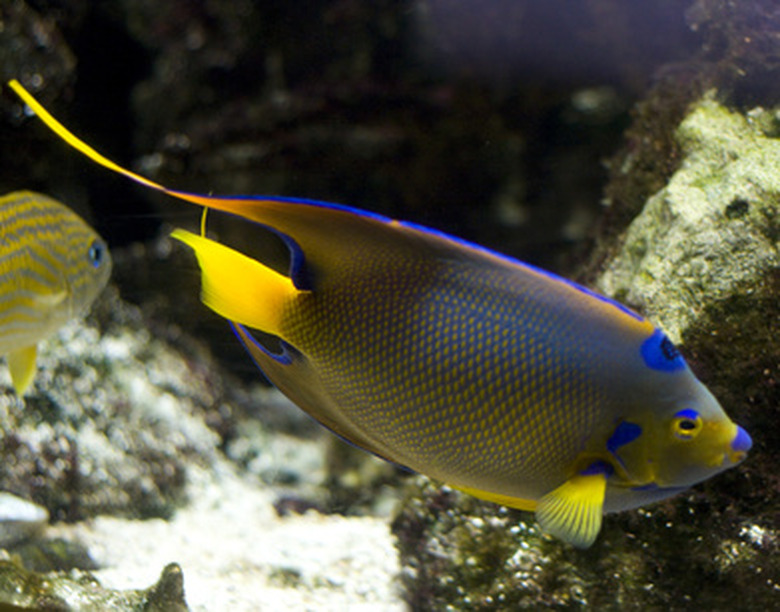How To Stop Fish Bullying
Tip
If you already have fish and you're planning on moving new fish into your aquarium, 4-H suggests adding them at night when the old fish will be less aggressive. Typically, if your aquarium is large enough with plenty of hiding places, old fish won't harass their new tankmates. While the rule of thumb for tank space is to provide one gallon of water per inch of fish, this is rarely enough space for multiple fish to remain healthy and docile. The best practice for both preventing and resolving bullying issues is to give your fish as much space as possible.
It is confusing and frustrating when your fish are peaceful one day and tearing each other apart the next. Fish bullying occurs for many reasons, some of which are easy to identify, others not so simple. And all fish have the potential to harass one another, regardless of size and temperament.
Step 1
Make sure the species in your tank was intended to live with other fish. Small freshwater fish such as tetras and guppies thrive in groups, while others such as Cichlids and Beta fish may live best alone. If you are keeping two or more naturally aggressive fish together in tight quarters, the only solution is to keep them in separate tanks.
Step 2
Look for nests or spawned young in the tank. If your fish are in the heat of breeding time, they may be uncharacteristically territorial in order to protect their young. If this is the case, keep a separate tank where you can house the victims (especially if these fish are smaller than their attackers) until breeding time is completed.
Step 3
Test the ammonia levels in the water and see if the fish tend to dwell near the top and gasp for air. If the tank lacks oxygen or ammonia levels are high, fish can become stressed and resort to bullying one another.
Step 4
Provide special food for aggressive bottom-feeders. Sometimes hungry bottom-feeders are attracted to the slime coat on fish, a protective layer that keeps your fish safe from disease and parasites.
Step 5
Make sure that the behavior you're witnessing isn't actually mating behavior. With live-bearing fish, males tend to chase females around the water—this behavior is only serious if the female shows signs of exhaustion or if she is being constantly hounded by her fellow fish.
Step 6
Add one or two more fish of a single species if the victimized fish is the only one of its kind in an aquarium. Large or aggressive fish are less likely to bully a docile fish if it is part of a group.
